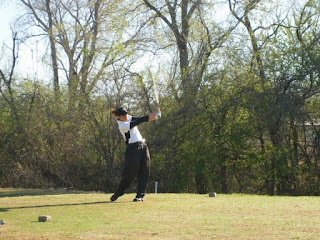Therapy Gone Wrong for a "Type A" SLP
Every Speech-Language Pathologist
dreams of the day when they will have back-to-back perfect treatment sessions.
Imagine finding that perfect game, having all three of your patient’s brothers
and sisters sitting quietly off to the side as you and your patient work
without interruption; or imagine zero behavioral outbursts, despite challenging
your patient with more difficult tasks.
More often than not, this “perfect”
treatment session is not what my treatment session looks like!
During a treatment
session or an assessment my telephone will ring or a colleague will knock on
the door. Shoes and socks are not just
slipped off, but are thrown into the air for an unknown reason. The special
reinforcement snack (that I bought especially for my patient) is now considered
“yucky” and inevitably the bubbles, which are my back up for when all goes
wrong, are spilled everywhere. The toy or game that I imagined the patient
requesting, describing, or problem solving with, just goes awry!
As a Speech-Language Pathologist
who admittedly has a Type A personality, these scenarios left me frustrated,
overwhelmed and exhausted. Frustrated, because I couldn’t get this treatment
right. Overwhelmed, because I personally
felt embarrassed that my therapy plan was not playing out the way I wanted in
front my of patient’s parents. Exhausted, because I spent countless hours
revisiting the treatment session in my mind, trying to pin point the moment
where I lost control of the appointment, thinking of reasons why the toy wasn’t
the right fit, and contemplating the possibility of having the wrong room. In
reality the problem wasn’t any of that. It was myself, and dare I say it was my
very own Type A personality traits, getting in the way!
When I took a step back, and pushed
my Type A personality traits aside, I realized all of the amazing therapy
opportunities that I was letting just slip through my fingers! The telephone
ringing, people knocking on my door, toys breaking, shoes flying, yucky snacks…
yes all of it could be used in treatment with benefit! I started to ask myself
questions such as: “Did my patient attend to the telephone ringing? Could they
localize the sound? Did they label the telephone or imitate the sound? Did they
ask a “wh” question? Did they relate a personal experience regarding the phone?
For my older patients, were they able to return to task? Was the ringing a
distraction? Could my patient continue to attend to their first given task
despite the background noise?” I found that a plethora of analysis and treatment
options just opened up all in a natural opportunity!
You may be thinking, alright the
telephone rang, I can overcome that, what about a toy breaking, shoes flying, a
yucky snack, or bubbles dumped over my head? All of these seemingly problematic
scenarios present with equal and unique opportunities for treatment. Broken toy
or a toy with missing pieces? Go on a scavenger hunt! Model asking to fix the
toy, “mommy fix please?” Talk about the disaster, “Oh no, toy broken!” Take the
opportunity to teach how to trade it in for a new toy! Yucky snack? One-by-one
throw pieces of it away telling each piece goodbye or emphasize the appropriate
pragmatics of “no thank you!” Bubbles spilled everywhere? Let’s practice
learning how to take turns, practice saying “sorry,” model cleaning up with the
clean up song, or teach new vocabulary such as, “oh no!” “gross!” or “sticky
bubbles!”
Learning to let go of “the plan”
can sometimes be the most beneficial and fun part of your treatment or
assessment. So push those Type A tendencies aside and let the creative juices
flow. Look for the hidden speech and language treasures that can come out of a “therapy
gone wrong” session!





Comments
Post a Comment